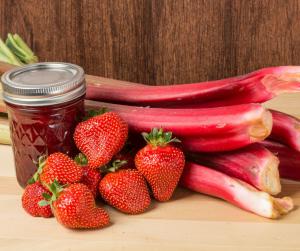By: Judy Davie - The Food Coach
 This weekend we spent some time looking around nurseries to buy some Australian native edible plants. Curiously, and despite the hype surrounding the health potential of native foods from other countries, we haven't embraced our own native foods with the same levels of enthusiasm as we have done with superfoods from the Amazon and the Pacific Isles. And yet, we have a plum with sky-high amounts of anthocyanins, antioxidants with very effective anti-inflammatory agents. Inflammation is the precursor to most diseases in the body including obesity, diabetes, arthritis, heart disease, and diet - good and bad - contributes greatly to the degree of inflammation in the body. This weekend we spent some time looking around nurseries to buy some Australian native edible plants. Curiously, and despite the hype surrounding the health potential of native foods from other countries, we haven't embraced our own native foods with the same levels of enthusiasm as we have done with superfoods from the Amazon and the Pacific Isles. And yet, we have a plum with sky-high amounts of anthocyanins, antioxidants with very effective anti-inflammatory agents. Inflammation is the precursor to most diseases in the body including obesity, diabetes, arthritis, heart disease, and diet - good and bad - contributes greatly to the degree of inflammation in the body.
Australian scientists and the Queensland government are terribly excited about our homegrown Queen Garnet plum, as studies on rats have demonstrated how, regardless of diet, this fruit was seen to have a significant role in reducing inflammation and inflammatory-related disease.
We couldn't find a Queen Garnet tree at our local nursery, I think because they are not available to the common market, but we did buy a Davidson Plum and I have read that the fruit from the Davidson plum contains 100 times more vitamin C than in oranges and the antioxidant lutein, which is important in eye health. The plums also contain magnesium, zinc, calcium, potassium, and manganese - many reasons to take care of this plant.
I know we are not all fortunate enough to have a garden to grow bush tucker, but we can all buy plums, and now is the time to do it.
There are over 200 different varieties of plums grown in Australia, including Japanese and European varieties. Japanese varieties are grown more extensively in Australia than European plums and usually have larger fruit with predominantly red skin. European plums, also grown in Australia tend to be smaller and their skin colour can range from yellowy-green to deep blue or purple. Newer varieties have a pinky-red flesh with red to purple and black skin. These have a sweet juicy flesh and low acid skin.
We may not know the antioxidant content of all the plums on the market, but we can be pretty sure that those with the deepest coloured flesh and skin have the most so look out for them when you're out shopping.
And just before I head out to the garden to watch my plum grow, I shall close with this interesting factoid: Each plum stone has its own unique pattern, just like human finger prints I love nature
Comments
Be the first to comment!
|